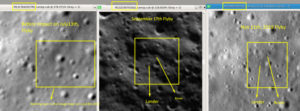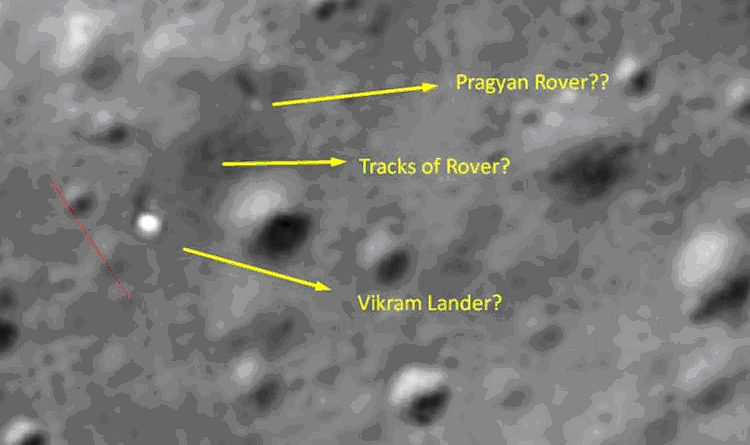Chandrayaan-2 Rover May Still Be Intact On Moon’s Surface – Chennai Techie
August 02, 2020
Shanmuga Subramanian had also earlier helped NASA find the debris of the Vikram lander on the moon’s surface months after its hard landing on the moon’s south side.
Months after India’s collective heartbreak over the crash landing of the Chandrayaan-2’s Vikram lander, a techie in Chennai has found that the rover on the lander may still be intact on the moon’s surface. This is the ‘Pragyaan’ rover that was attached to Vikram lander when the latter made a hard landing on the moon’s surface in September 2019 after losing contact with Indian Space Research Organisation.
Shanmuga Subramanian, the techie who had earlier helped NASA find the Vikram lander on the moon’s surface, has now found that latest pictures that he accessed shows the rover’s tracks on the moon’s south side, where the lander had made the hard landing on September 7, 2019. The images are from NASA’s Lunar Reconnaissance Orbiter (LRO) Camera, Shanmuga says, speaking to TNM.
“I just happened to chance upon these pictures, I was looking up old Chandrayaan pictures and just decided to see the spot where the debris was found last year. I downloaded the images and enlarged it using NASA’s software, and I found something that resembled the rover tracks,” Shanmuga tells TNM.
Tweeting pictures of the moon’s surface, Shanmuga notes that the debris he found was of the Langmuir probe (a device to measure the density and variation of lunar surface plasma) from the Vikram lander. The debris that NASA found might be from other payloads, antenna, retro braking engines, solar panels on side etc. “Rover has rolled out from lander & has actually travelled few metres from the surface (sic),” Shanmuga says, pointing out the locations in his tweets.
The techie feels that the Pragyaan rover may have continued to receive transmissions, and may have rolled out a few metres from the skeleton Vikram lander, whose payloads were disintegrated due to the rough landing.

Shanmuga adds in another tweet, “It seems the commands were sent to lander blindly for days and there is a distinct possibility that lander could have received commands and relayed it to the rover.. but lander was not able to communicate it back to the earth.”
However, only ISRO can confirm this, he says. He has sent his latest findings to ISRO, he adds.
“These are pictures from January 4, 2020, which were taken from the same area. The previous pictures had some shadow so this was not visible before. Different areas get illuminated differently, and all regions will not get the same illumination. So that is why on January 4 we were able to see more than we did in November,” Shanmuga explains.
Shanmuga had earlier been in the news after he helped NASA locate the debris of Chandrayaan-2’s Vikram Lander, which had made a hard landing after the lander slightly deviated from its original path. Chandrayaan-2’s orbiter still continues to go around the moon in an orbit of 96 km x 125 km and continues to carry out experiments.
Courtesy: Opera News/thenewsminute

